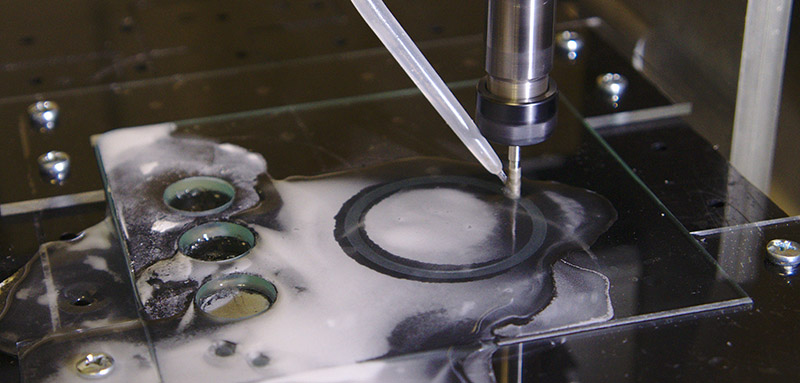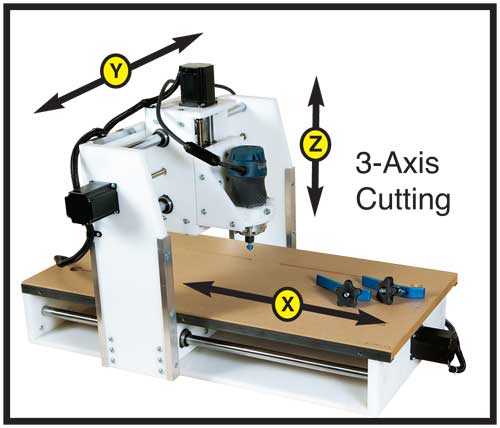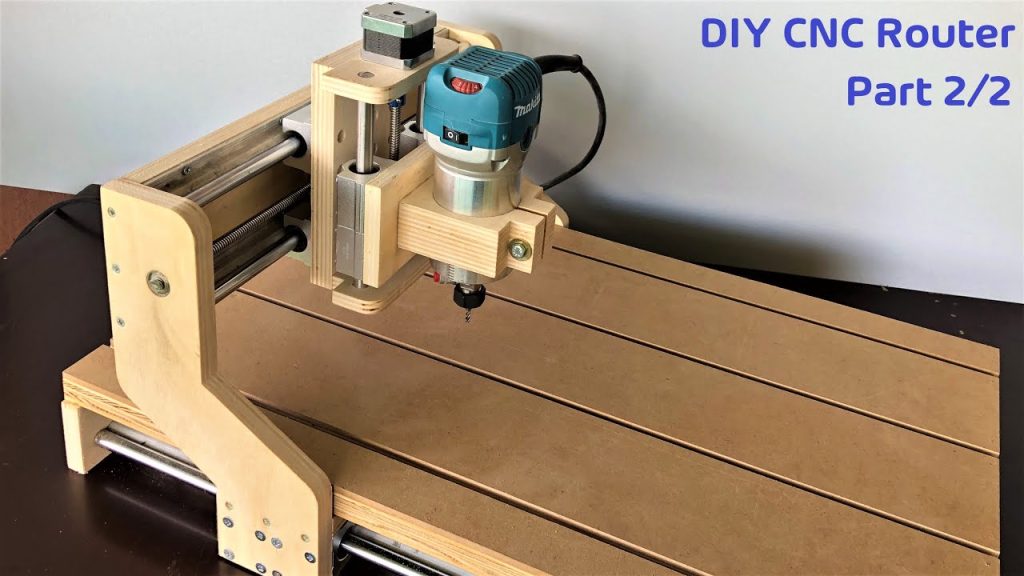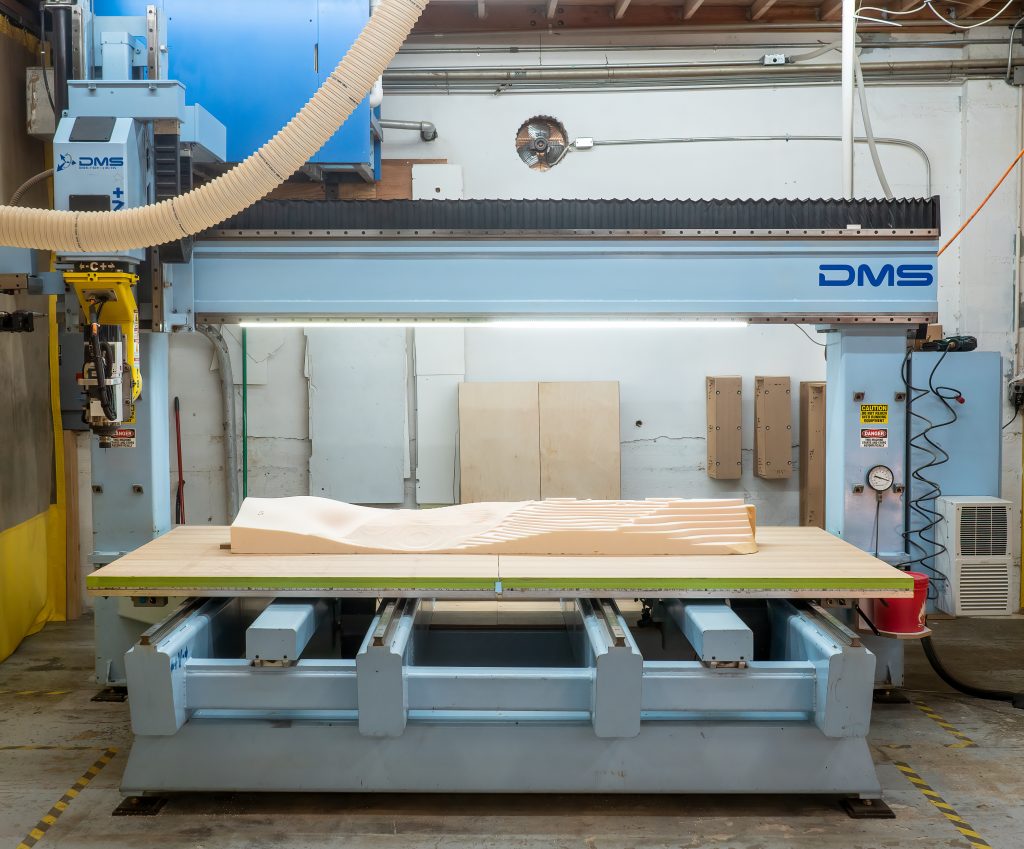Table of Contents
Computer Numerical Control (CNC) routers have become increasingly popular in various industries for their precise and intricate cutting capabilities. These versatile machines have proven their worth in a variety of applications, from woodworking and metal cutting to plastic and foam. However, a question that remains is whether a CNC router can effectively cut glass, a material known for its delicate nature and unique properties. In this article, we will delve into the world of glass cutting with CNC routers, exploring the possibilities, limitations, and alternative methods for cutting glass.
CNC routers are known for their precision and ability to work with a variety of materials. But can they cut glass? The answer is yes, with the right tools and techniques. While glass cutting may seem like a daunting task, the use of a CNC router can make it much easier and more efficient. With the ability to create intricate cuts and designs, CNC routers can be a valuable tool for businesses in the glass industry or those looking to create unique glass products.
Types of Glass
Before we dive into the capabilities of CNC routers in cutting glass, it is essential to understand the different types of glass and how they may impact the cutting process.
A. Overview of Various Glass Types
| Glass Type | Description | Cutting Methods | Pros | Cons |
|---|---|---|---|---|
| Annealed Glass | Standard glass cooled slowly during manufacturing; easy to cut and shape but prone to breaking | CNC Routing, Waterjet, Laser, Scoring | Easy to work with, widely available, cost-effective | More susceptible to breaking |
| Tempered Glass | Strengthened glass through a heating and cooling process; shatters into small pieces when broken | Waterjet | Highly resistant to breakage, safer when broken | Difficult to cut and shape, more expensive than annealed glass |
| Laminated Glass | Two or more layers of glass bonded with an interlayer (PVB or EVA) | Waterjet, Laser (with limitations) | Added strength, impact resistance, sound, and UV protection | Difficult to cut due to interlayer, more expensive |
| Insulated Glass | Two or more panes of glass separated by a spacer and sealed with gas or vacuum between panes | Not suitable for CNC routing | Energy-efficient, noise reduction, condensation control | Not suitable for cutting with a CNC router, more expensive |
- Annealed Glass: Annealed glass, also known as standard or float glass, is the most common type of glass. It is cooled slowly during the manufacturing process, resulting in a glass that is easy to cut and shape but is also more susceptible to breaking.
- Tempered Glass: This type of glass undergoes a heating and cooling process that strengthens it, making it more resistant to breakage. However, this also makes it more difficult to cut and shape, as it shatters into small pieces when broken.
- Laminated Glass: Laminated glass consists of two or more layers of glass bonded together with an interlayer, typically made of polyvinyl butyral (PVB) or ethylene-vinyl acetate (EVA). This type of glass is difficult to cut due to the interlayer, which provides added strength and impact resistance.
- Insulated Glass: Insulated glass is composed of two or more panes of glass separated by a spacer and sealed with gas or vacuum between the panes. This type of glass is primarily used for energy efficiency and is not suitable for cutting with a CNC router.
B. The Impact of Glass Type on CNC Routing
The type of glass used in a project will significantly impact the CNC routing process. Each glass type presents unique challenges and considerations when attempting to cut it with a CNC router.
- Annealed Glass: Annealed glass is the most compatible with CNC routing, as it is easier to cut and shape. However, it is also more susceptible to breaking, which requires careful handling, specialized cutting tools, and slow cutting speeds.
- Tempered Glass: Cutting tempered glass with a CNC router is not recommended, as it shatters into small pieces when broken. This glass type requires alternative cutting methods, such as waterjet cutting.
- Laminated Glass: CNC routing of laminated glass is challenging due to the interlayer bonding the glass layers. The interlayer may cause uneven cuts and increased risk of breakage. Waterjet and laser cutting are better alternatives for cutting laminated glass.
- Insulated Glass: Insulated glass is not suitable for cutting with a CNC router, as the gas or vacuum sealed between the panes could be compromised during the cutting process. This glass type is designed for energy efficiency rather than cutting and shaping.
In conclusion, the glass type significantly impacts the feasibility and effectiveness of CNC routing. Annealed glass offers the highest compatibility, while tempered, laminated, and insulated glass present challenges that necessitate alternative cutting methods.
CNC Router Capabilities and Limitations
A. The Mechanics of CNC Routers
The type of glass used in a project will significantly impact the CNC routing process. Each glass type presents unique challenges and considerations when attempting to cut it with a CNC router.
- Annealed Glass: Annealed glass is the most compatible with CNC routing, as it is easier to cut and shape. However, it is also more susceptible to breaking, which requires careful handling, specialized cutting tools, and slow cutting speeds.
- Tempered Glass: Cutting tempered glass with a CNC router is not recommended, as it shatters into small pieces when broken. This glass type requires alternative cutting methods, such as waterjet cutting.
- Laminated Glass: CNC routing of laminated glass is challenging due to the interlayer bonding the glass layers. The interlayer may cause uneven cuts and increased risk of breakage. Waterjet and laser cutting are better alternatives for cutting laminated glass.
- Insulated Glass: Insulated glass is not suitable for cutting with a CNC router, as the gas or vacuum sealed between the panes could be compromised during the cutting process. This glass type is designed for energy efficiency rather than cutting and shaping.
In conclusion, the glass type significantly impacts the feasibility and effectiveness of CNC routing. Annealed glass offers the highest compatibility, while tempered, laminated, and insulated glass present challenges that necessitate alternative cutting methods.
B. Factors Affecting CNC Router Performance
- Cutting Tool Material: To cut glass, a CNC router requires a specialized cutting tool, typically made of diamond or carbide, to withstand the hardness and abrasiveness of glass.
- Cutting Speed: Glass is a delicate material, and cutting it requires slow, controlled movements to prevent chipping, cracking, or shattering.
- Coolant: A continuous flow of coolant is necessary during the cutting process to reduce heat buildup and minimize the risk of cracking.
- Vibration: Excessive vibration can lead to uneven cuts and breakage. CNC routers must be finely tuned and well-maintained to minimize vibrations.
C. Limitations of CNC Routers in Glass Cutting
While CNC routers can potentially cut annealed glass with specialized cutting tools, slow speeds, and coolant, there are several limitations that make them less than ideal for cutting glass:
- Difficulty with Complex Shapes: CNC routers may struggle to cut intricate designs or tight curves in glass, as the delicate nature of the material increases the risk of breakage.
- Incompatibility with Certain Glass Types: As mentioned earlier, tempered, laminated, and insulated glass present unique challenges that make them unsuitable for cutting with a CNC router.
- Risk of Breakage: Despite precautions, there is still a significant risk of glass breaking during the cutting process due to its fragile nature.
Alternative Methods for Cutting Glass
Given the limitations of CNC routers in glass cutting, it’s crucial to explore alternative methods that offer better results and minimize the risk of breakage.
A. Waterjet Cutting
Waterjet cutting uses a high-pressure stream of water mixed with an abrasive material to cut through glass. This method offers several advantages over CNC routing:
- Suitable for All Glass Types: Waterjet cutting can handle tempered, laminated, and insulated glass, as well as annealed glass.
- Reduced Risk of Breakage: The absence of direct contact between the cutting tool and glass minimizes vibrations, resulting in cleaner cuts and less breakage.
- Intricate Designs: Waterjet cutting can easily handle complex shapes and tight curves in glass, offering greater design flexibility.
B. Laser Cutting
Laser cutting utilizes a high-powered laser beam to heat and cut through the glass. This method has several benefits, such as:
- Precise Cuts: Laser cutting offers exceptional precision and accuracy, making it suitable for intricate designs.
- Minimal Contact: The non-contact nature of laser cutting reduces vibrations and the risk of breakage.
- Faster Cutting Speeds: Laser cutting can achieve faster cutting speeds compared to CNC routing, reducing production time.
However, laser cutting is not suitable for all glass types and may struggle with thicker or multi-layered glass.
C. Diamond Tools and Scoring Methods
Traditional glass-cutting methods using diamond-tipped tools or glass scoring tools can be effective for cutting simple shapes in annealed glass. However, these methods may not offer the same level of precision or versatility as CNC routing, waterjet cutting, or laser cutting.
Ensuring a Successful Glass Cutting Process
A. Choosing the Right Cutting Method for Your Project
Selecting the appropriate cutting method for your glass project is critical. Consider factors such as glass type, design complexity, and desired finish quality when making your decision.
B. Safety Considerations
Always prioritize safety when working with glass, including wearing protective gear, such as gloves and safety glasses, and following proper handling and disposal procedures.
C. Tips for Optimizing the Glass Cutting Process
- Choose the right cutting tool and method for your specific glass type.
- Ensure proper maintenance and calibration of your cutting equipment.
- Utilize coolant and minimize vibrations to reduce the risk of breakage.
Case Studies: CNC Routers and Glass Cutting
V. Case Studies: CNC Routers and Glass Cutting
A. Success Stories of Using CNC Routers for Glass Cutting
- Artistic Applications: Some artists have successfully used CNC routers for cutting annealed glass in their artwork. By employing specialized cutting tools and slow cutting speeds, these artists have created intricate designs and patterns that showcase the potential of CNC routers in glass cutting for small-scale projects.
- Custom Signage: Small businesses specializing in custom glass signs have utilized CNC routers to cut glass efficiently. These companies benefit from the precision and repeatability of CNC routers, allowing them to produce consistent and high-quality products.
- Decorative Glass Panels: CNC routers have been used in creating decorative glass panels for residential and commercial interiors. By carefully controlling the cutting process, manufacturers have achieved unique and intricate designs on annealed glass panels.
B. Challenges and Lessons Learned
Despite some success stories, there are challenges and lessons learned when using CNC routers for glass cutting:
- Risk of Breakage: Glass, especially annealed glass, is susceptible to breaking during the cutting process. Ensuring proper cutting tool selection, slow cutting speeds, and coolant application is crucial to minimize breakage risks.
- Difficulty with Complex Shapes: CNC routers may struggle to cut intricate designs or tight curves in glass due to the delicate nature of the material. In these cases, alternative cutting methods like waterjet or laser cutting may be more suitable.
- Incompatibility with Certain Glass Types: CNC routers are not suitable for cutting tempered, laminated, or insulated glass. Understanding the limitations of CNC routers and selecting appropriate cutting methods for different glass types is essential for successful glass-cutting projects.
These case studies highlight the importance of proper equipment, technique, and glass type selection when using CNC routers for glass cutting. While there are success stories, the challenges faced emphasize the need for continuous research and innovation in this field.
Conclusion
While CNC routers have shown some potential in cutting annealed glass, their limitations make them less than ideal for many glass-cutting applications. Alternative methods, such as waterjet cutting and laser cutting, offer better results and versatility in handling various glass types and designs. By selecting the appropriate cutting method, maintaining safety, and optimizing the cutting process, you can achieve successful results in your glass-cutting projects.
At Unitymanufacture, we understand the complexities and challenges involved in glass cutting and offer a range of CNC machining services to cater to your needs. Our experienced team and state-of-the-art equipment ensure that you receive the best possible results, regardless of your project’s specifications. To learn more about how our CNC machining services can help you achieve your desired outcomes, visit Unitymanufacture’s CNC Machining Services and get in touch with our experts today.
Frequently Asked Questions
In this section, we will answer some of the most commonly asked questions about whether a CNC router can cut glass.
Can a CNC Router Cut Glass?
A CNC router can cut glass but with some limitations. The cutting process mainly depends on factors such as the type of glass, cutting tool material, cutting speed, and the use of coolant.
Annealed glass, which is easier to cut and shape, is the most compatible with CNC routing. However, cutting annealed glass with a CNC router requires specialized diamond or carbide cutting tools, slow and controlled cutting speeds, and a continuous flow of coolant to prevent chipping, cracking, or shattering.
CNC routers are not recommended for cutting tempered glass, as it shatters into small pieces when broken. Laminated and insulated glass also present unique challenges that make them unsuitable for cutting with a CNC router.
Given the limitations and risks associated with cutting glass using a CNC router, alternative methods like waterjet cutting or laser cutting may offer better results and versatility for handling various glass types and designs.
Can a CNC router cut tempered glass?
No, CNC routers are not suitable for cutting tempered glass, as it shatters into small pieces when broken. Waterjet cutting is a better alternative for cutting tempered glass.
What Materials Can a CNC Router Cut?
A CNC router can cut a wide range of materials, including wood, plastic, foam, and metal. The type of material that can be cut will depend on the specific capabilities of the machine, as well as the type of cutting tool being used. Some CNC routers are designed specifically for cutting metal, while others are better suited for cutting wood or plastic. It is important to choose the right machine and cutting tool for the job in order to achieve the best results.
In addition to cutting, a CNC router can also engrave, carve, and shape materials. This versatility makes it a popular tool for a wide range of applications, from woodworking and furniture making to signage and jewelry design.
What is the best method for cutting intricate designs in glass?
Waterjet cutting and laser cutting offer better precision and accuracy for cutting intricate designs in glass compared to CNC routing. Choose the method that best suits your glass type and project requirements.
What Are the Benefits of Using a CNC Router?
One of the main benefits of using a CNC router is that it allows for precise and accurate cutting, even for complex shapes and designs. This is because the machine is guided by a computer program, which can control the movement and speed of the cutting tool with a high degree of precision. This level of accuracy is difficult to achieve with manual cutting tools.
Another benefit of using a CNC router is that it can save time and increase efficiency. Once a design has been programmed into the machine, it can be replicated multiple times with consistent results. This can be particularly useful for large-scale production runs or projects that require multiple identical pieces.
What Factors Should I Consider When Choosing a CNC Router?
When choosing a CNC router, there are several factors to consider. One of the most important is the size of the machine, as this will determine the maximum size of the materials that can be cut. Other factors to consider include the type of cutting tool being used, the speed and accuracy of the machine, and the level of automation and customization that is available.
It is also important to consider the specific needs of your project or business. For example, if you will be cutting metal, you may need a machine with a higher cutting speed and a more powerful cutting tool. If you will be using the machine for multiple applications, you may want to choose a machine that is more versatile and customizable.
What Safety Precautions Should I Take When Using a CNC Router?
Using a CNC router to cut glass safely requires proper precautions, such as protective gear, machine maintenance, and following operating procedures. With the right expertise and equipment, CNC routers can produce intricate designs and precise cuts on glass, making them valuable for industries like architecture, interior design, and art. Cutting glass demands more skill and attention, but with the correct approach, a CNC router can effectively work with this delicate material.
Request a quote today!
[contact-form-7 id="1578" title="Contact form"]
Please compress the file into a ZIP or RAR file before uploading. Alternatively, send through your RFQ by email.
enquires@unitymanufacture.com





